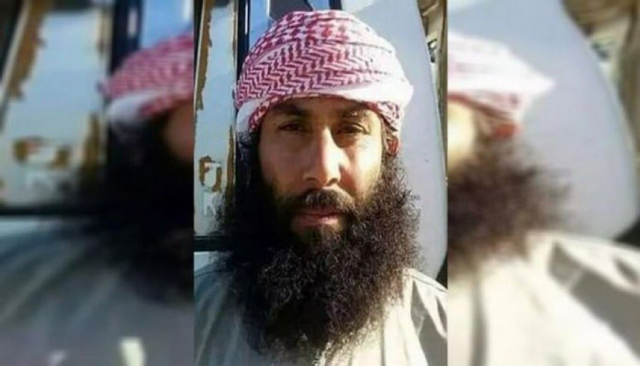
Abu Hafs al-Hashimi al-Quraishi via @Visegrád24 on X (formerly known as Twitter)
On August 6, Islamic State (IS) announced its new caliph, Abu Hafs al-Hashimi al-Quraishi. He is now the organization’s fourth caliph since Abubakar al-Baghdadi declared the caliphate in 2014 (allarabnews.com, August 6). The announcement also dispelled the notion that the previous caliph was killed by Turkish security forces, as the Turkish government had claimed. Rather, IS blamed the formerly al-Qaeda-aligned Hayat Tahrir al-Sham (HTS) for killing the last caliph.
Although IS would presumably focus on targeting HTS in northwestern Syria based on the announcement, the organization’s recent operations in Syria, if anything, suggest a resurgence in attacks on roadways in the rural eastern part of the country. On August 1, for example, IS targeted a convoy of fuel tankers on the route from Homs to IS’s former capital, Raqqa; the attack resulted in the burning of the tankers, the death of civilians, and the injury of nine drivers (npasyria.com, August 1). This was the first attack on a main Syrian roadway since 2021, and is reflective of IS’s resurgence in the area. It remains to be seen, however, whether this attack is representative of a broader trend, and/or whether it will boost the new caliph’s popularity (Twitter/@GregoryPWaters, July 31).
IS lacks the significant presence in Damascus it had during its peak. Nevertheless, in late July, IS also managed to attack Damascus’ Sayeda Zainab mausoleum, which is a Shia holy site; this coincided with its other attack on the Homs-Raqqa roadway (rudaw.net, July 29). The assault on the mausoleum, which killed six people, was reminiscent of al-Baghdadi’s era and jihadist groups that predated IS, such as those under Abu Musab al-Zarqawi. In those days, the organization sought to rally Sunnis by attacking Shia, which, in turn, could lead to the organization of anti-Sunni Shia militias and reprisal attacks. Nevertheless, the sustainability of IS’ Damascus operation came into question when the mastermind of the operations was arrested in Lebanon shortly afterwards (al-Arabiya.com, August 19).
While seeing a rise in IS attacks in Syria, Abu Hafs is also coming to power with the support of IS’s “province” network. After the announcement of his caliphacy, the provinces promptly pledged loyalty to him, including from smaller operations, such as the Pakistani and Yemeni provinces, as well as from the larger ones, such as Islamic State in West Africa Province (ISWAP). This last group also released photos of multiple factions pledging loyalty to Abu Hafs. Perhaps also reflecting IS’ interest and success in Africa, even a small cell in Sudan pledged loyalty, despite the fact that IS had not previously announced a presence there (Twitter/@ToreRHamming, August 15). Although the Syrian and Iraqi provinces released multiple pledge photos, the cells tended to be small, which did not portray the type of resurgence that the recent roadway and Damascus attacks implied.
The key goals for Abu Hafs during his tenure will likely be three-fold. First, he must stay alive, bucking IS’s growing reputation for losing calpihs to rivals or counter-terrorism operations. Second, he must maintain the global province network while continuing to boost operations in the “heartland” of Syria and Iraq. Third, he must seek revenge against HTS for killing the prior caliph. Should he fail, IS may see its organization crumbling by 2024, a full decade since al-Baghdadi first declared the caliphate.
